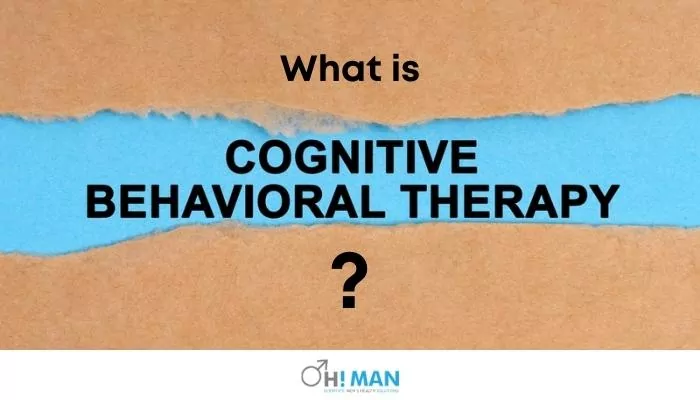Cognitive Behavioural Therapy (CBT) for ED: How Does it Works?
Cognitive Behavioural Therapy (CBT) for ED: How Does it Works?

Erectile dysfunction (ED) might be challenging to discuss, yet it affects men of all ages. And although it is possible to treat it with medicines while ignoring the mental health side, this may result in a longer recovery or any other long-term problems. Further, it has been shown that males with ED tend to have low self-esteem, low self-confidence, a diminished sense of manhood, and depressive symptoms, even though this is not uncommon.
Although Erectile Dysfunction affects men physically, it is often due to external reasons like partner/relationship problems, co-occurring mental illnesses, or other lifestyle habits.
Cognitive Behavioral Therapy (CBT) is successful in both personal and couple’s therapy contexts for erectile dysfunction due to the many variables that might impact it. Further, cognitive-behavioural techniques for treating sexual dysfunctions have been in use for years. Moreover, it is one of the most reliable and effective treatments for ED and other sexual problems in men. Let’ us understand more about the therapy. read more about erectile dysfunction in hindi
Table of Contents
- What Is Cognitive Behavioural Therapy?
- What Conditions Can Cognitive Behavioral Therapy Treat?
- How Does Cognitive Behavioural Therapy Work?
- What Happens During Cognitive Behavioural Therapy Sessions?
- Cognitive Behavioural Therapy For ED
- What Are The Five Components Of Cognitive Behavioral Therapy?
- What Is An Example of Cognitive Behavioural Therapy?
- Final Say
What Is Cognitive Behavioural Therapy?
Cognitive Behavioral Therapy (CBT) is a talking treatment that might help you overcome challenges by modifying your thoughts and actions.
Moreover, it is often used to manage anxiety and depression, although it may also be effective for many other mental and physical health issues.
CBT may facilitate good changes in a person’s feelings and behaviours. It may also provide individuals with coping methods that aid in overcoming obstacles.
Research demonstrates that CBT may assist individuals with panic disorder, depression, and other illnesses. In addition, there is emerging evidence that it may help alleviate chronic pain.
The emphasis of therapy sessions is on analyzing and creating techniques for coping with daily difficulties and behaviours. CBT typically comprises 5–20 individual sessions. However, some individuals may need more; moreover, it may also consist of group sessions.

What Conditions Can Cognitive Behavioral Therapy Treat?
Cognitive behavioural therapy techniques are effective for various mental health disorders.
Furthermore, CBT may assist individuals not just with depression or anxiety problems but also with:
- eating disorders like anorexia and bulimia
- bipolar disorder
- obsessive-compulsive disorder
- anxiety disorders
- psychosis
- phobias
- post-traumatic stress disorder (PTSD)
- sleep issues, like insomnia
- alcohol & Drug abuse
- schizophrenia
So apart from treating mental health issues, CBT can help treating other conditions, including:
- relationship issues
- separation or divorce a
- major health diagnosis, like cancer
- poor self-esteem
- sadness or loss
- persistent pain
- insomnia
- common life stress
Furthermore, people with ED can also greatly benefit from Cognitive behavioural therapy. CBT can assist in eliminating anxious emotions that might create or exacerbate ED. As psychological factors are one cause of ED, you may not need any more therapy after taking CBT. In addition, this method of treatment may increase intimacy and enhance your relationship.
How Does Cognitive Behavioural Therapy Work?
CBT attempts to help you recognize and examine how your emotions and perceptions influence your behaviour. So once you recognize these patterns, you may start learning how to modify your behaviour and create new coping mechanisms. Unlike other talking therapies, CBT focuses on your present challenges rather than those from the past.
It seeks practical strategies to enhance your mental condition regularly.
CBT strives to change any thought and behaviour patterns in the way of a person’s desired way of life. Recognizing negative views or misconceptions that are influencing behaviour is what CBT aims for.
A distorted perspective may increase susceptibility to:
- leaping to assumptions
- inaccurately seeing things as catastrophic
- an unhelpful mindset
- perceiving everything as either great or awful, with no in-between
If people develop frightening or harmful thought patterns, they may begin to think in this manner unconsciously. Cognitive behavioural therapy focuses on questioning and analyzing these automatic ideas to reality. When a person begins to see a circumstance from a more favourable perspective, their distress often reduces. Further, they can take activities or make choices more beneficial to them in the long run.
Throughout CBT sessions, an individual may learn to:
- create awareness of problematic, automatic thinking
- Assess underlying assumptions that could be harmful.
- identify the difference between facts and damaging beliefs
- cultivate a more constructive method of thought and perceiving circumstances

What Happens During Cognitive Behavioural Therapy Sessions?
If your doctor prescribes CBT, you would usually meet with your therapist weekly or every two weeks.
Typically, the therapy duration is between 5 and 20 visits, with each session between 30 and 60 minutes.
Throughout the sessions, you and the therapist will break your issues into components, such as your ideas, bodily sensations, and behaviours.
You and your therapist will assess whether these aspects are unrealistic or unhelpful and their impact on you and your present circumstances.
Afterwards, your therapist would be available to help you determine how to change detrimental beliefs and behaviours.
After determining what you can modify, your therapist will ask you to implement these adjustments in your everyday life, and you will share your progress at your next appointment.
The ultimate objective of CBT is preparing you on how to use the techniques you’ve acquired throughout treatment in everyday life.
So this must help you manage your issues and prevent them from negatively influencing your life, even if your treatment is over.
Cognitive Behavioural Therapy For ED
Cognitive behavioural therapy (CBT) for erectile dysfunction treatment may be effective when erectile dysfunction is induced by psychological issues such as stress, worry, performance anxiety, sadness, or poor self-esteem.
CBT helped men overcome erectile dysfunction in research conducted during the past 20 years. Further, CBT discloses inaccurate expectations or ideas about sexuality and negative thought patterns and actions that may contribute to ED.
CBT employs various methods, including cognitive restructuring, sensate attention, stimulus control, and sexual education. As anxiety and pressure are the primary causes of psychological erectile problems, a therapist may also assist you in relaxation methods. Additionally, breathing exercises and muscle relaxation techniques may help reduce anxiety, and mindful masturbating can help you become more conscious of your sexual reaction.
What Are The Five Components Of Cognitive Behavioral Therapy?
CBT may help us escape the vicious cycle of negative thoughts and emotions by instructing us how to recognize and control unfavorable thoughts and actions.
The five components of cognitive behavioural therapy are:
1. Psychoeducation
Psychoeducation is the procedure of educating individuals about CBT and its potential benefits. This component helps individuals comprehend the relationship between their ideas, emotions, and actions and how CBT may facilitate change.
2. Cognitive restructuring
Cognitive restructuring is the identification and rejection of undesirable ideas. This component assists individuals in recognizing their negative beliefs and trains them on how to question and reinterpret them.
3. Behaviour change
Behaviour change refers to the process of modifying actions that contribute to unpleasant thoughts and emotions. So this component helps individuals identify and modify habits that worsen their condition.
4. Relaxation and stress management
Relaxation and stress control are essential components of cognitive behavioural therapy. This component teaches individuals how to calm and cope with stress.
5. Maintenance and relapse prevention
Maintenance and relapse prevention are essential components of cognitive behavioural therapy (CBT). So this element assists individuals in maintaining their gains and preventing relapse.
What Is An Example of Cognitive Behavioural Therapy?
If, for example, you are attending CBT sessions to treat anxiety issues, your therapist may advise you to expose yourself to such a scenario. So it could be going into a crowded public place, controlling your emotions, or dealing with the situation.
Final Say
Cognitive behavioural therapy is where an individual learns to modify their views to improve their behaviour and disposition. Together, a counsellor and client establish objectives and anticipated results either you get want to treat chronic pain or psychological problems. Yet the must be active and follow what the therapist says to get the benefit.
As a part of your ED treatment, your doctor may recommend you for CBT and the therapy will offer good results alongside erectile dysfunction treatment and Erectile Dysfunction medicines. If you are taking Viagara, Tadalafil, or any other ED medication, CBT might help to get noticeable results. Or else, the Ohman experts can recommend other strategies and non-surgical methods like penile injections or ed vacuum pumps for sale in india. So book an online consultation with Ohman experts to treat any men’s sexual health concerns.



